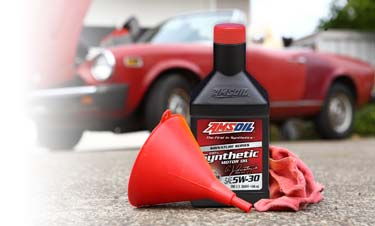What’s the Minimum I Should Drive My Car? And Other Winter Car Storage Tips Jamie Jarvi|Oct 01, 2018 8:30 AM The roads are home to all kinds of vehicles. Daily drivers that clock thousands of miles each year. Seasonal vehicles that only clock hundreds. And then there are some whose odometers move only when being […]
You are browsing archives for
Tag: oil change
New ATV/UTV Oil Change Kits Offer Maximu...
New ATV/UTV Oil Change Kits Offer Maximum Convenience AMSOIL ATV/UTV Oil Change Kits combine everything needed to perform an oil change on the most popular models of Polaris* ATVs and UTVs in one convenient package, including… 2 or 2.5 quarts (depending on the kit) of AMSOIL 5W-50 Synthetic ATV/UTV Motor Oil • 1 oil filter To find […]
Why do Motorists Change Oil in the Sprin...
Why do Motorists Change Oil in the Spring and Fall For many drivers, budding trees in spring and changing leaves in fall signal the time for an oil change. If you ask them why, they’ll likely just shrug and says it’s what they’ve always done. The reasons are more nuanced than you think. One involves […]
Fall is already here – It´s time for an
Hey Sioux Falls, It’s Fall Oil Change Time For those of us who love taking care of our vehicles, falling leaves and dropping temperatures signal the time for an oil change. Prepare your vehicle for winter with AMSOIL Signature Series Synthetic Motor Oil. Its superior performance helps you take engine protection to the next level. […]



